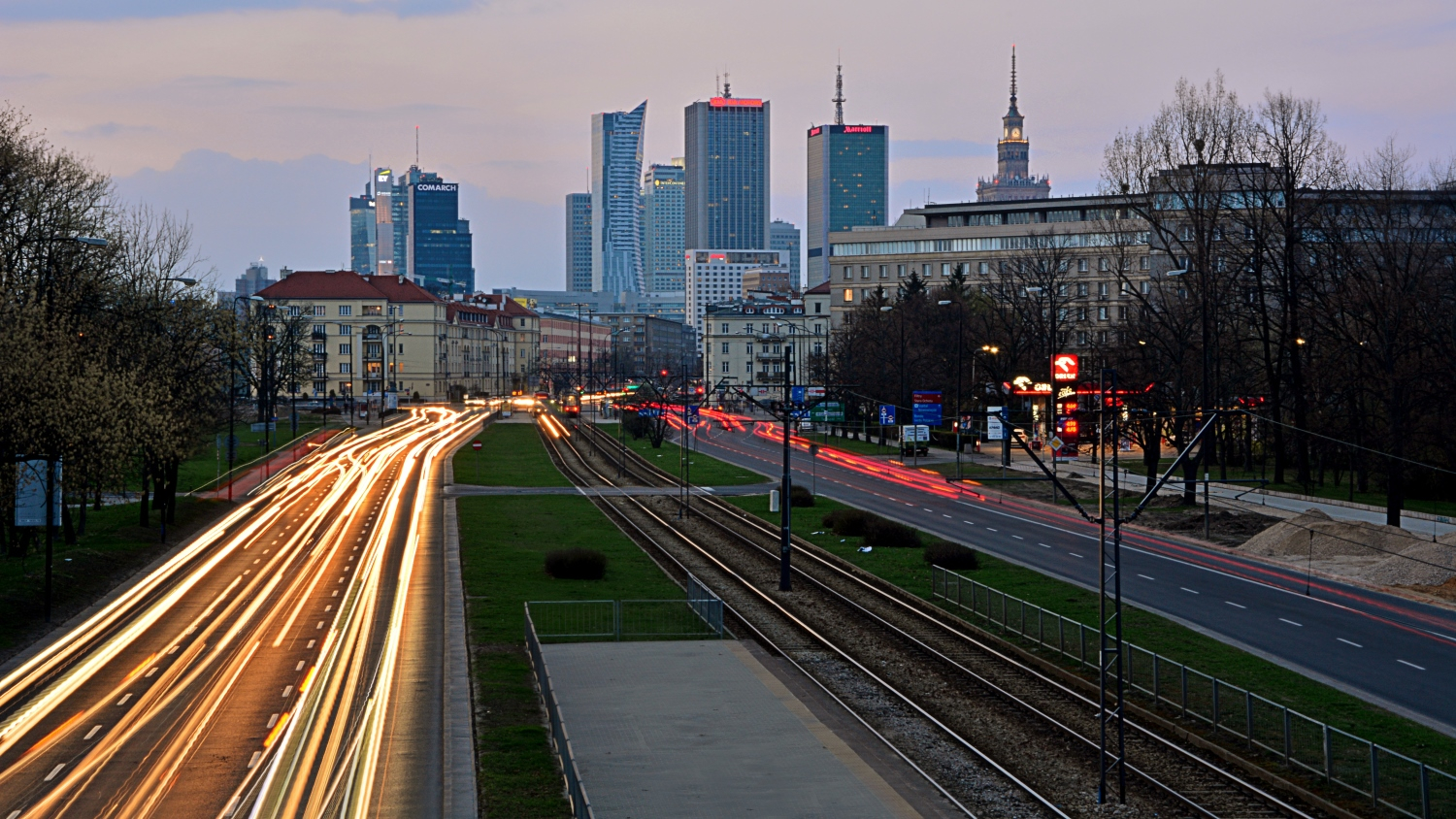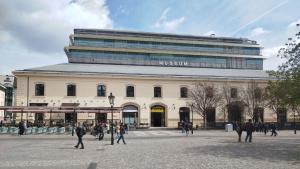
COVID-19 has slowed the activity of office developers, but intensified competition in the residential land market. Warehouses are now so popular among investors that one can speak of a shrinking supply of land for more of these projects. JLL analyses trends in the investment land market for office, residential, retail, logistics/industrial and hotel projects in Poland.
"The real estate market has responded to the pandemic more calmly than analysis had initially predicted. At the same time, however, it should be noted that the past year has seen a significant divergence in individual market segment performances. We have dealt with a wide range of phenomena: growing demand and price increases for land designated for residential and warehouse developments, signs of uncertainty and slowdown on the office market, as well as the challenging conditions faced by the hotel and retail sectors", comments Tomasz Lewandowski, Head of Land and Medium-Size Investments, JLL
Office market – the pandemic has cooled investor sentiment
"One of the first responses to the outbreak of COVID-19 was the almost immediate suspension of expansion plans by foreign investors on the Polish market. The majority of previously initiated projects and very advanced sales transactions, involving land designated for office projects, did continue. However, the ongoing bidding processes were often slowed down or even temporarily suspended", says Tomasz Lewandowski.
"The second wave of the pandemic has enhanced trends such as a decline in demand, an increase in subletting offers, as well as a change in the lease structure (a drop in the number of new leases in favour of renewals). The cautious approach adopted by investors accentuated the decline in demand for office investment land. This resulted in less competition in pending processes that were going ahead and also led to the widespread practice of negotiating sale prices using the argument of increased investment risk. The price adjustment in purchase offers made by developers in Q4 2020 ranged from 15% to over 30%", adds Tomasz Lewandowski
The pandemic verified forecasts regarding an increase in prices for land designated for office projects. In the case of Warsaw, the best opportunity to maintain value despite COVID-19 was for land on the outskirts and in the very heart of the city, where average values invariably fluctuate from PLN 3,000 to 4,500 per sqm of usable area.
"In the next few years, we can expect fewer land purchase transactions for office projects. Interest in purchasing land will principally come from major and well-established players who do not need external financing and will want to take advantage of the expected supply gap in Warsaw and some regional cities in 2023. Interest in older properties for redevelopment will continue. This may involve both changes in the functionality of existing buildings as well as brand new investments. At the same time, land prices in prime locations will remain at similar levels", summarizes Tomasz Lewandowski
Residential market – investment land for the sector still very much in demand
"The decline in apartment sales noted in Q2 2020 didn’t dampen interest in the purchase of land for residential developments. Most land sale transactions were closed without a hitch, with buyers continuing to offer prices similar to, or even higher than 2019 levels. A strong rebound in the results of residential unit sales in the second half of the year supported developers’ decisions to start new residential projects, while empty land banks encouraged land purchases", explains Joanna Kieszczyńska, Director, Land and Medium-Size Investments, JLL
Average transaction prices per sqm for residential usable areas in Warsaw were about PLN 2,000, with values exceeding PLN 5,000 in the most prestigious districts, including Powiśle, the central zone of Śródmieście and Upper Mokotów. In the largest regional cities, average transaction prices in relation to the residential usable area ranged between PLN 700 and 2,000.
"The continuing scarcity of investment land for housing development will increase the involvement of developers in more difficult projects, such as the purchasing of post-industrial plots which may require remediation. Falling supply and rising land prices, particularly noticeable in Poland’s six largest markets will also drive developer expansion into new markets. We also expect that the prices of land allocated for residential projects will continue to rise, with continued fierce competition among developers in private purchase processes and municipal tenders. Increased interest in land will also be influenced by the increasingly rapid development of the institutional rental market", summarizes Joanna Kieszczyńska
Retail market – smaller cities enter the game
The COVID-19 pandemic has hit the retail market hard, limiting investment activity in this sector to retail parks, convenience centres, stand-alone grocery stores, DIY stores, projects for redevelopment, or even for a change in functionality.
"However, the pandemic and the restrictions did not affect investors’ interest in land for retail parks or convenience centres, which grew rapidly during 2020. Investors' land-seeking activity has focused on smaller towns where there is a lack of modern retail space or where their current supply does not meet all consumer needs. The following months should see a continuation of both trends", explains Tomasz Lewandowski
Average prices of undeveloped land for retail parks ranged between PLN 150 and PLN 500 per sqm in Poland. An upward tick was seen for land situated on the outskirts or within the city limits of the largest regional cities. In Warsaw land for this category was up to PLN 1,000 per sqm or more.
Hotel market - more interest in resorts
Whilst domestic leisure demand rebounded strongly once hotels reopened in May, it was largely limited to best in class tourist destinations. However, city hotels have struggled to generate business. As a result, interest in hotel development plots was almost exclusively limited to enquiries regarding resorts. Investors were particularly drawn to seaside locations and beachfront plots along the Baltic coast.
"We assume that in 2021, enquiries for undeveloped land with hotel usage will mainly be for leisure and recreational locations along the coastline in the north of Poland or near ski lifts in the south of the country. We also expect that these enquiries will mostly come from investors with an established presence on the Polish market", explains Joanna Kieszczyńska
Warehouse market - rising prices per square metre
"Interest in warehouse land was driven last year by factors including the dynamic development of e-commerce, which directly translated into increased demand for industrial and logistics space and land. On the other hand, the market witnessed developers adopting a more cautious approach and a significant decrease in the share of speculatively built investments. This has been caused by the lengthening decision-making processes regarding the purchase of plots through even more in-depth technical and commercial analyses as well as difficulties in carrying out administrative procedures necessary for the investment", says Tomasz Olszewski, Head of Industrial CEE, JLL
The growth of the logistics sector in recent years and the high demand for investment land directly affected the increase of transaction prices of land designated for warehouse and production developments in the most popular locations. This trend has been reinforced during the COVID-19 pandemic. Warsaw remains the most expensive market with prices reaching PLN 700 – 800 per sqm. The further away one goes from Warsaw’s city borders, the lower the land prices, dropping to PLN 100 – 120 per sqm. Prices on equally attractive regions of Upper Silesia, Wrocław and Poznań remain steady at PLN 150 – 300 per sqm.
"The ongoing development of the logistics sector, including in particular the e-commerce sector, will continue to generate growing demand with an increasingly limited supply of land in the most attractive core locations. This means further growth in what are already high transaction prices. Investors will be forced to consider locations situated further from major markets. Interest in brownfield sites will continue to grow, especially in large cities, mainly due to the development of last-mile logistics facilities and a shortage of greenfield urban plots in key locations. Attention should also be given to the increase in demand for land that can be used for locating data centres, as this may directly result in industrial land price increases, especially in the area of Warsaw and its suburbs", summarizes Tomasz Olszewski.



